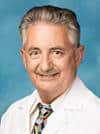The Foundation of the National Lipid Association, the Preventive Cardiovascular Nurses Association, and Mended Hearts recently launched Cholesterol Counts, a program designed to accumulate internet-based information on how much people in the United States know about their cholesterol. “The program gathers data on how much patients care about their cholesterol and whether they are treated if their cholesterol levels are high,” says Ralph M. Vicari, MD, FACC. “The goal of the program is to get a pulse of cholesterol knowledge in the U.S. and find where gaps may exist. The program is also designed to help determine whether healthcare professionals are discussing cholesterol levels with patients.”
The Cholesterol Counts program has surveyed more than 12,000 adults, including approximately 200 adults in each of the 50 states. The poll, which is available online at www.CholesterolCounts.com, was conducted online by Harris Poll on behalf of Sanofi and Regeneron Pharmaceuticals. The results are weighted demographically and attitudinally so that they are representative of the national population and the population of each state.
Concerning Results
Initial results from the Cholesterol Counts poll were released in 2015, and showed that 71% of Americans surveyed are not sure of or do not recall their LDL cholesterol levels despite the fact that this is a critical health factor that can increase risks for heart attack and stroke (Figure). “This finding is concerning because patients need to know their cholesterol levels and goals so that they talk to their physicians to help manage it and assess their risk for potential cardiac events,” says Dr. Vicari. He recommends that clinicians make a concerted effort to write down cholesterol levels and give these numbers to their patients. It is also paramount for them to explain what these numbers mean so that patients understand why it is important to manage high cholesterol.
“The Cholesterol Counts poll also found that just 29% of Americans have been told by their doctor or healthcare professional that they have high LDL cholesterol,” Dr. Vicari says. “In fact, about 47% of the people surveyed under age 35 have never had their cholesterol tested.” Another 44% of all people surveyed reported that they are unsure if LDL cholesterol is referred to as “bad” cholesterol.
At the state level, four states—New Mexico, South Carolina, Tennessee, and West Virginia—tied for having the highest percentage (37%) of people surveyed who reported being told by a healthcare provider that they have high LDL cholesterol. Massachusetts had the lowest percentage (21%) of people reporting that they were told they have high LDL cholesterol.
Other Key Findings
Lack of knowledge regarding LDL cholesterol levels was similar among older and younger people, according to survey data. “The percentage of those surveyed who were not sure of or did not recall their LDL cholesterol levels were fairly similar for all age groups,” says Dr. Vicari. “However, more Americans aged 55 and older reported being personally concerned about cholesterol when compared with those between the ages of 35 and 54. These findings are especially concerning considering that guidelines recommend testing cholesterol levels at a younger age.” The American Academy of Pediatrics recommends cholesterol testing for all children ages 9 to 11.
About 27% of people surveyed who reported being told that they have high LDL cholesterol said they have not taken a prescription medication to manage it. A wide array of medications and other lifestyle treatments are available to help patients manage their cholesterol levels and reduce their risk for heart attacks and strokes, and Dr. Vicari says clinicians should better advocate for patients by educating them about these treatment options at the point of care.
Closing the Gaps
Having the Cholesterol Counts poll results readily available may help healthcare professionals improve gaps in education, awareness, and treatment of cholesterol. The Foundation of the National Lipid Association recommends that healthcare professionals strive to:
- Improve communication between patients and physicians
- Train other healthcare providers to convey to patients their LDL cholesterol levels and what they should be.
- Demonstrate the link of LDL cholesterol to the prospect of having a heart attack or stroke.
“These efforts are paramount for enhancing patient education and understanding,” Dr. Vicari says. “This information needs to be used to improve patients’ knowledge and communication with healthcare providers. At this stage, the message for healthcare providers is to overtly tell people what their LDL cholesterol levels are and explain to them what these levels mean as well as their LDL goals.”
The Cholesterol Counts Poll will continue to accumulate data through the end of the year. Healthcare providers are encouraged to ask their patients, families, and friends to take the poll. “Ultimately, we hope to see incremental improvements in knowledge and awareness about cholesterol in the Cholesterol Counts program,” says Dr. Vicari. “In the meantime, clinicians should be more vigilant about getting people under the age of 35 to have their cholesterol levels tested and know their numbers.”



 Janine Anthes
Janine Anthes